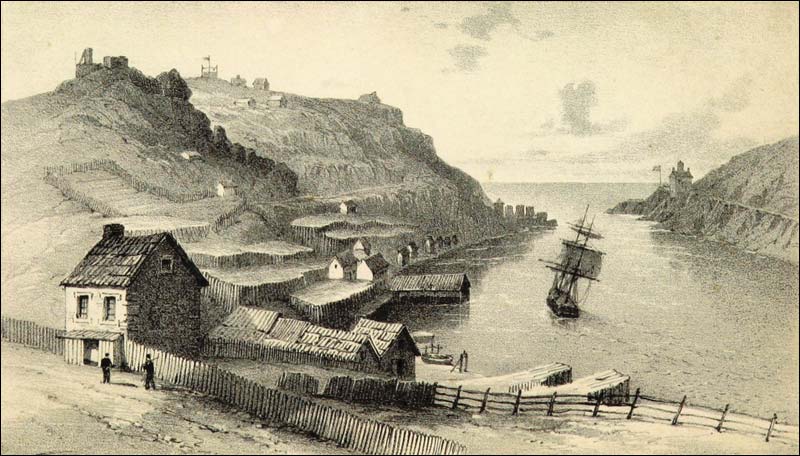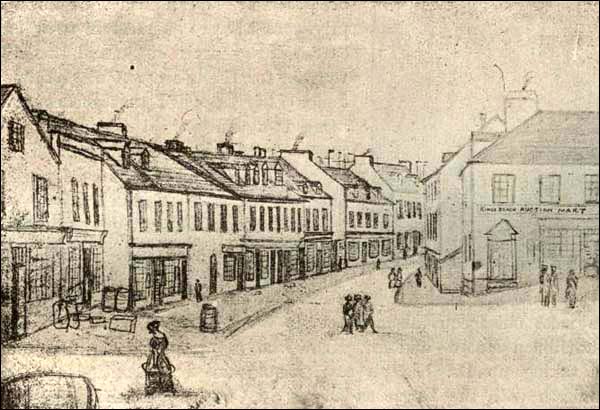St. John's in the 18th Century
In the 18th century, Newfoundland was decentralized to a degree that we have difficulty in grasping today. Communities like Harbour Grace, Trinity, Placentia, and Trepassey did not look to St. John's as their capital, but to England; and they traded not with each other, but with communities on the other side of the Atlantic. Trepassey was closely connected with Topsham, for example, and Trinity with Poole. This began to change after 1788, partly because of the decline of the migratory fishery, but also because of the disruptive effect of the wars on trans-Atlantic communications. And as the wars drew to a close, it was clear that St. John's had emerged as the economic, social, military and administrative centre of an emerging colonial society. Governors Gower and Keats marvelled at the degree to which St. John's had changed over the course of just a couple of decades "from a mere fishing station to a commercial town (Head, 1976, 234)."

Merchant Prosperity
The long-established administrative and military importance of St. John's was not matched by any economic significance until the late 18th century. In years that followed, the volume of shipping increased, attracted by the security of the harbour and the presence of extensive warehousing facilities. Unlike smaller communities like Trepassey and Trinity, St. John's had never been dominated by one or two "great merchants," and the American War of Independence reinforced this pattern by creating new opportunities within the fish trade which merchants old and new, small and great, were quick to recognize and exploit. There were also large profits to be made through the sale of captured American vessels.
This prosperity dramatically decreased following the end of the war. Nevertheless, St. John's remained attractive to those who migrated to or did business in the town. Even outport planters living close to St. John's preferred to buy and sell there, because competition among the merchants gave them better prices than they could get in their home communities.
The prosperity and diversity of St. John's was also enhanced by massive additions to the fortifications, the garrison, and the naval squadron. This meant a significant increase in military and naval spending, and attracted craftsmen, artisans, and tradespeople in great numbers. Before 1775 few tradesmen could be found in the town who were not connected with the fishery. Twenty years later there were cobblers, a watchmaker, a glazier, a baker, barbers, masons, and five tailors
As the number of craftsmen and merchants dwelling permanently in St. John's rose, conditions were created which stimulated population growth. One merchant in 1793 attributed the increased population of St. John's to the growing numbers of female domestics brought there by civil and military officials. He complained that the women would "marry with the residents and settle at St. John's, so that a number are annually carried out to replace them (Handcock, 1989, 95)." The population of St. John's in the mid-18th century was little more than that of Harbour Grace - about 1,000 people in the winter; by 1786 it was 2,500, by 1807 it was over 5,000, and by 1813 it had doubled again.

It was this kind of growth, both in economic and demographic terms, which accounts for the fact that St. John's had newspapers, libraries, charitable facilities, health services and so on, long before their appearance elsewhere in Newfoundland. Unlike other communities, St. John's during the Napoleonic wars acquired the appearance, and many of the characteristics of a genuine urban centre.




